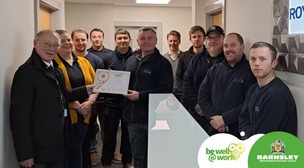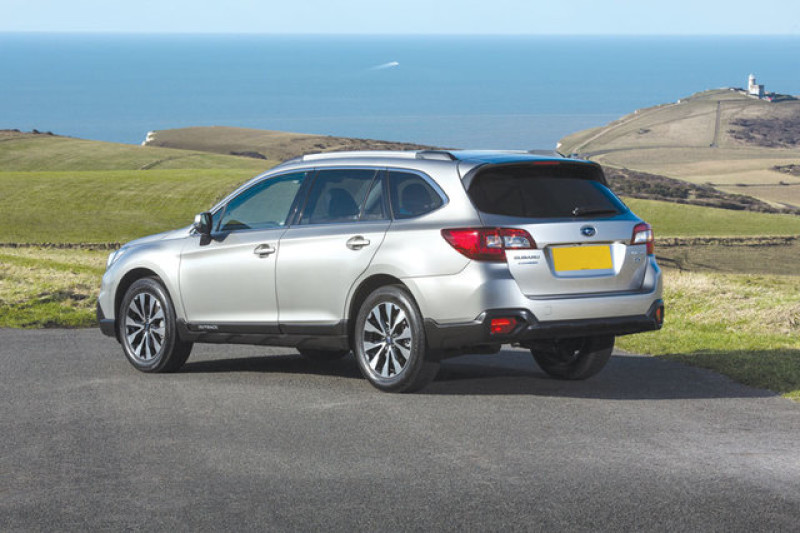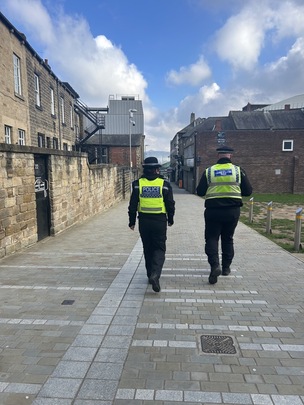A CAR which spawned a vehicle segment is a major claim to make, but one that the Subaru Outback can rightly say it did when the first one was launched in 1995.
The world's first crossover, which successfully combines the benefits of a passenger estate car with the all-road capabilities of an SUV, has been upgraded 20 years later, and the results are spectacular.
The fifth generation model sports an all-new exterior design, a significantly higher quality interior and a raft of new safety technology compared to the outgoing one, and is set to receive praise for its practical, all-road nature from a new set of fans.
At first glance not a lot appears to have changed to the look of the Outback compared to its predecessor, but take a closer look and you'll soon begin to spot that this is a whole new beast of a car, and it's brilliant.
From the front, the bumper-integrated hexagonal grille and hawk-eye headlights maintain consistency with other models in the Subaru family, while the profile is a subtle evolution of the existing Outback rather than a total transformation.
What the designers have tried to do, and I believe have achieved, is to create a more dynamic looking model which at the same time remains true to its rugged crossover roots.
It may not have changed a massive amount on the outside, but inside the Subaru Outback is completely unrecognisable to its predecessor. I never got to drive the fourth generation model, but having been shown one at the side of the newer one they are as different as chalk and cheese.The only thing they have in common is that they both have spacious interiors - cavernous to be honest, offering plenty of space for the whole family. But the quality of the new model is simply breath-taking and brings the Outback bang up to date.
You get a lot of car for your money when you buy an Outback, and there are two trim levels available – SE and SE Premium.
SE models come with automatic LED headlamps and headlamp washers, cruise control, Active Torque Vectoring, 17-inch alloy wheels, heated front seats, electrically-adjustable driver's seat and privacy glass, as well as a 7.0-inch touchscreen infotainment system, incorporating satellite navigation, audio, smartphone connectivity and a rear view parking camera.
Petrol SE models also feature an emissions-reducing start-stop system and Subaru Intelligent Drive, which allows drivers to select different engine modes according to road conditions for improved economy and performance.
I drove the SE Premium model, which added a sunroof, keyless entry and push-button start, slightly larger 18-inch alloy wheels, leather seats and a powered rear tailgate.
It came with a 2.0-litre turbo-diesel engine and Subaru's Lineartronic (CVT) transmission, but a six-speed manual transmission and a 2.5-litre petrol engine are also available.
All of this and I've not even mentioned the really exciting bit about the new Outback yet - Subaru's 'EyeSight' technology, which is standard on models with CVT transmission.
EyeSight is Subaru's advanced collision avoidance technology which acts as a 'second pair of eyes' for drivers, employing stereo colour camera technology to monitor the road and traffic ahead for potential hazards. This is the first time the technology has been made available in the UK and Europe, contributing in no small part to the Outback's maximum five-star Euro NCAP crash test safety rating. The system's two-colour cameras are located either side of the rear view mirror to detect the presence of vehicles, pedestrians, cyclists and other potential hazards. EyeSight includes six features: Pre-collision Braking, Pre-collision Throttle Management, Adaptive Cruise Control, Lane Departure and Sway Warning, Pre-collision Steering Assist and Lead Vehicle Start Alert.
With the addition of Eyesight and Subaru's active and passive safety features, the new Subaru Outback benefits from lower insurance ratings, among the most competitive in its class. I have to admit that I was totally taken aback when I sat in the car for the first time. I wasn't expecting it to be half as luxurious as it was, and the easy-to-use gadgets and touchscreen infotainment screen are set out in a contemporary rather than an in your face way.It's a more grown up way of bringing a car up to date. Take the handbrake for example. Yes it's a button as they are on modern cars nowadays, but it's a button that resembles a handbrake and leaves you in doubt that you have put it on rather than you having to double check by searching for a symbol on a cluttered dashboard. Simple yet effective.
Despite its size it is so easy to drive too, and it handles brilliantly thanks to its stiffer suspension and dampers. The gearbox is as smooth as any automatic I've driven for a while, and there's plenty of power under the bonnet when you need it on dual carriageways and motorways too.
The steering is so soft and responsive too thanks to the ratio being quickened, and a new metal core means that the steering wheel is stiffer than previous models to give a more natural feel.I didn't take it off-road, but having driven it on some of the bumpy and windy country lanes around Penistone I'm sure it remains as comfortable on tough terrain as it's predecessors as it does being driven around town on the daily commute. There's an X-Mode function for increased off-road ability too, as well as a hill-descent option. The new Outback is more practical than ever too – the boot 4.5 per cent larger than the outgoing model to be precise at 559 litres, while the Smart Power Tailgate that means you can close it at the touch of a button is a great and welcome addition, particularly as I found if you have a small children and/or it is pouring it down with rain. So if you're in the market for a crossover that can go anywhere and do anything then I suggest you give the original a close look.
Prices for the new Outback start from just short of £28,000 on-the-road.





























